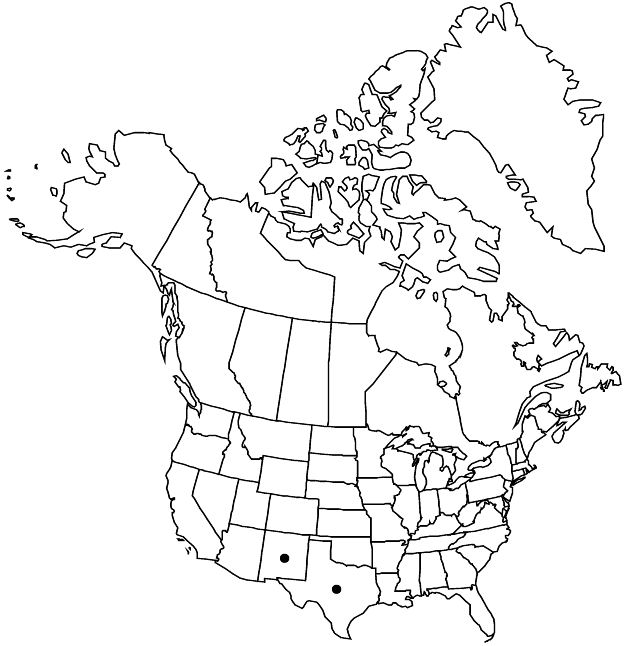Abutilon wrightii
Boston J. Nat. Hist. 6: 162. 1850.
Subshrubs, to 0.5 m. Stems procumbent or ascending, sometimes purplish, minutely stellate-pubescent, usually with simple hairs 1 mm. Leaves: stipules filiform, 3–4 mm; petiole often exceeding blade; blade markedly discolorous, ovate, 1.5–4 cm, ± as long as wide, base deeply cordate, margins dentate, apex acute to obtuse, abaxial surface with soft, densely matted pubescence, adaxial surface sparsely pubescent. Inflorescences solitary flowers. Flowers: calyx 10–15 (–20) mm, lobes accrescent, basally overlapping, cordate; corolla pale-yellow throughout, petals 14–18 mm; staminal column glabrous; style 6–9-branched. Schizocarps ± ovoid, 10 × 11 mm; mericarps: apically acuminate, densely hirsute. Seeds 3 per mericarp, 2.6 mm, muriculate. 2n = 14.
Phenology: Flowering spring–fall.
Habitat: Dry, open habitats, roadsides
Elevation: 100–300 m
Distribution

N.Mex., Tex., Mexico (Chihuahua), Mexico (Coahuila), Mexico (Nuevo León), Mexico (San Luis Potosí), Mexico (Tamaulipas)
Discussion
Abutilon wrightii is found in Texas primarily in the Big Bend area and scattered locations from Cameron and Travis counties. It has been reported in New Mexico from Eddy and Otero counties and likely elsewhere in the extreme southeast.
Selected References
None.
Lower Taxa
"wide" is not a number.